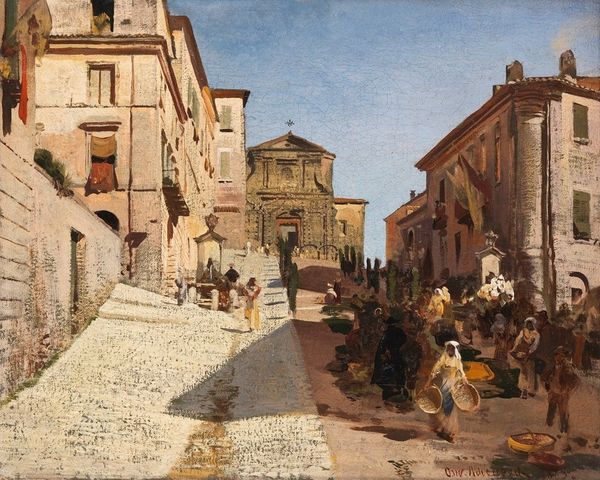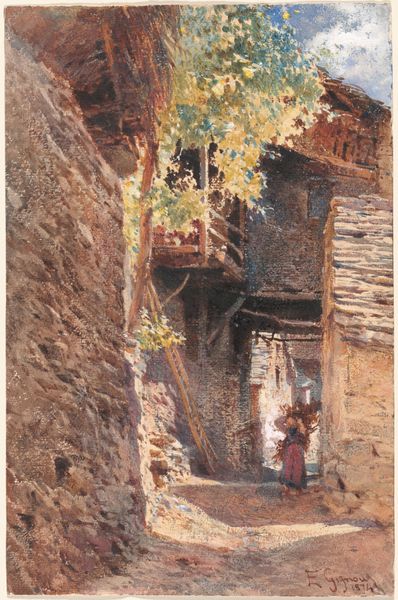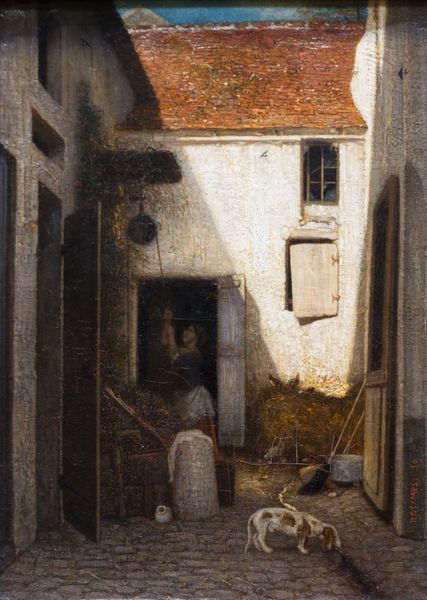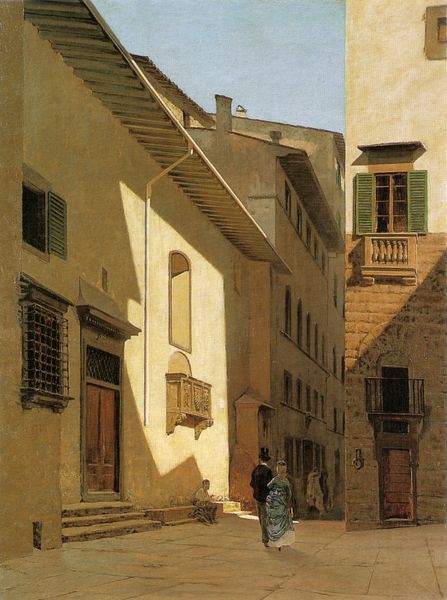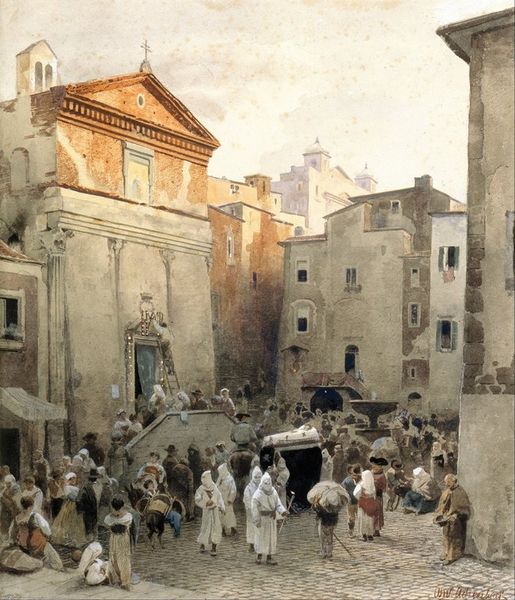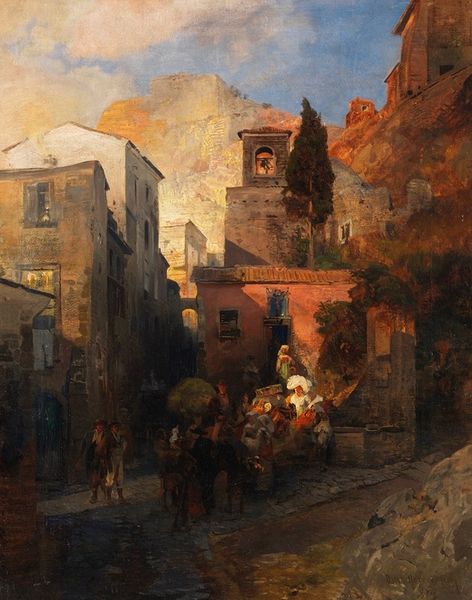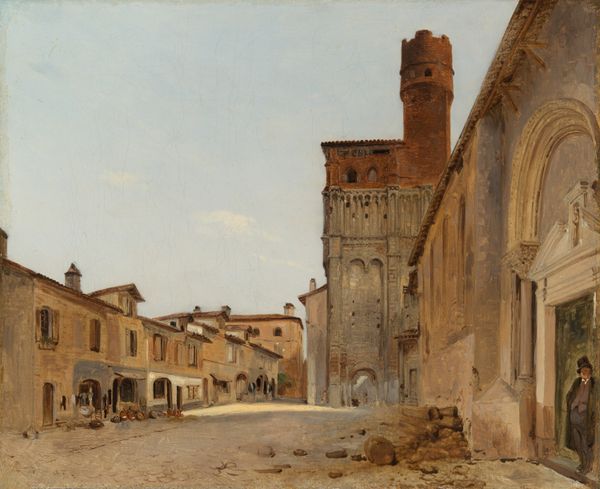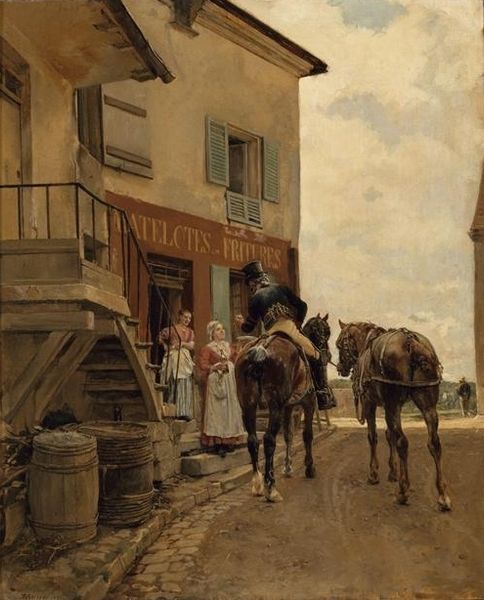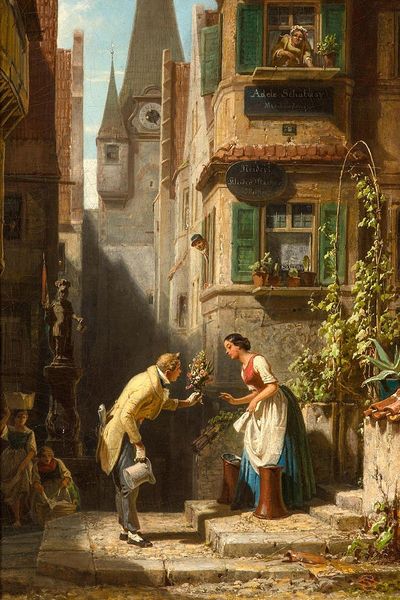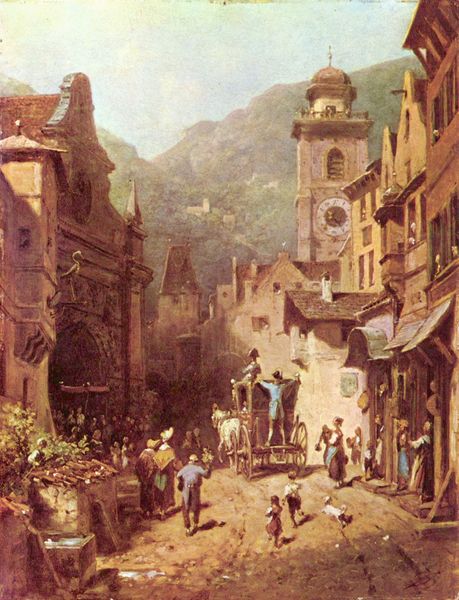
painting, oil-paint
#
painting
#
oil-paint
#
landscape
#
oil painting
#
cityscape
#
genre-painting
#
academic-art
#
italian-renaissance
#
realism
Dimensions: 59 cm (height) x 44.5 cm (width) (Netto)
Editor: So, this is "A Street in Gerano" painted in 1857 by Frederik Vermehren. It's an oil painting showing everyday life in a small Italian town, and it feels very…grounded, like you could almost step right into that scene. What strikes you most about this work? Curator: I'm drawn to the raw materials and processes at play here. Look at the stone—the very foundation of these buildings, likely sourced locally. The painting emphasizes a connection to the earth and the labor required to build these structures, doesn't it? Notice how Vermehren depicts the texture; it speaks to the physical act of quarrying, shaping, and assembling those stones. Editor: I see what you mean. It’s not idealized; it shows the actual texture of the place. So, you’re saying the painting isn't just about the scene, but about the *making* of that scene? Curator: Exactly! Consider the clothing the figures wear: probably made from locally-sourced materials, homespun perhaps. Their garments speak to the labor of textile production and the self-sufficiency of this community. Even the pig being tended speaks to the local availability of the food. It's about the infrastructure of daily life as created through manual work, right down to that child holding what seems like a metallic pot or dish - where did that come from, and what will it contain? Editor: I didn't think about the clothing or even the pig in that way! It’s like looking at a record of the town’s economic ecosystem. Do you think that Vermehren chose Gerano specifically because it exemplified this kind of… material honesty? Curator: That's entirely possible. Vermehren may have sought a place untouched by industrialization, where the relationship between people and their environment was direct and unmediated. The uneven paving stones suggest a historical mode of construction – consider the effort needed to put them there. Editor: So it's more than just a pretty picture; it’s a document of material culture, a study of labor and locality. Curator: Precisely! The painting encourages us to consider how things are made and how materiality shapes our lived experiences, yesterday and today. Editor: I definitely see the painting in a completely different light now, focusing less on the picturesque and more on the process and localism behind it all. Curator: And that focus enriches our understanding of both the artwork and the society it depicts.
Comments
No comments
Be the first to comment and join the conversation on the ultimate creative platform.
